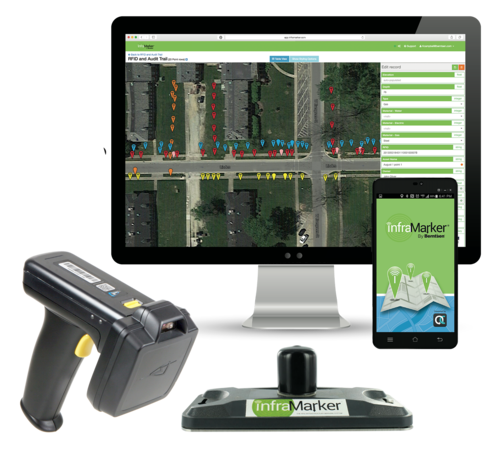Marking and Mapping – Two Factor Verification for Underground Locating
Blog by Emily Pierce, PLS, CFedS
It’s spring and construction is booming . . . hopefully with fewer actual “booms”, caused by utility strikes. Safe digging is something that’s near and dear to surveyors and any profession that involves excavation. As I mentioned in my last blog, preventable utility strikes cost at least $60 billion annually, not to mention the loss of life and life-altering injuries that can occur.
Geographic Information Systems (GIS)
GIS has emerged as a leading approach to managing utility assets and will become an essential tool for subsurface utility management. But regardless of how accurate GIS maps become, there will always be the need to validate the digital representation of the underground assets depicted in the maps with high quality in-field marking products. Mapping and marking is required.
In today’s world, this is called ‘two-factor’ verification and it is used in solutions like Uber (mobile map coupled with driver verification on arrival), online banking (text to phone to validate your account ownerships you) and your doctor’s office (“please tell me your name and date of birth”).
Surveyors have practiced this for years by using maps and then relying on Berntsen survey markers in the field. Two-factor verification drives safety, reduces errors in identification, and improves operational performance. There is no industry with greater need for two-factor verification than underground locating.
Technology to the Rescue
It is this two-factor verification that Berntsen has been working on with its InfraMarker RFID underground locating solutions. Tying an underground RFID asset identifier to a GIS delivers the best of both worlds – an accurate map with in-field verification.
I can’t help but think of the impact Connected RFID could have on preventing utility strikes if it was widely used. An RFID underground marker has a unique identifier tied to a GIS record so a field worker can identify the asset or particular location – not simply type of utility – before excavating. And RFID is utility agnostic, so the same locating and identification process works for water, gas, electric, or fiber.
We use two-factor verification to make sure we don’t get into the wrong Uber. Why can’t we take the same two-factor approach to make sure that we have safer underground digging?
Questions? Let us know!


